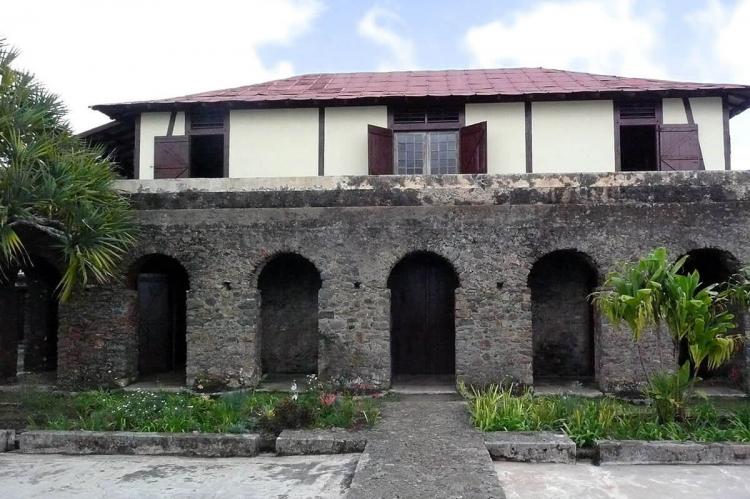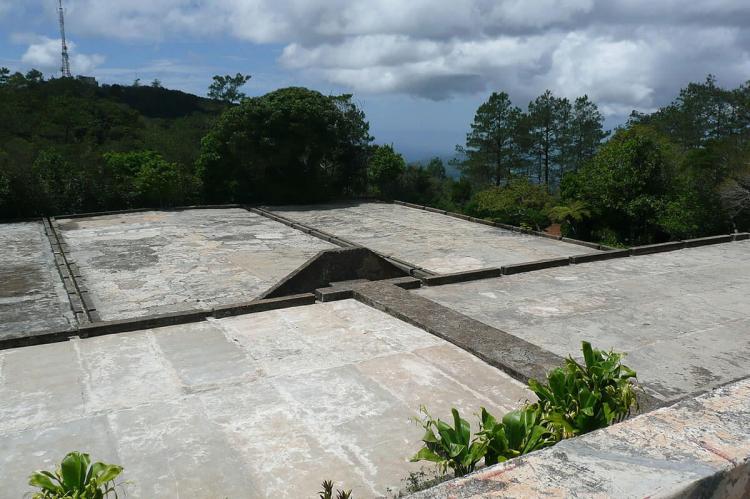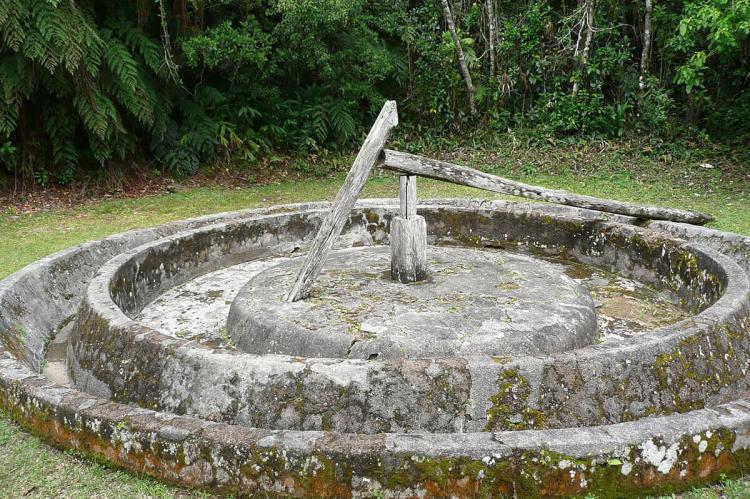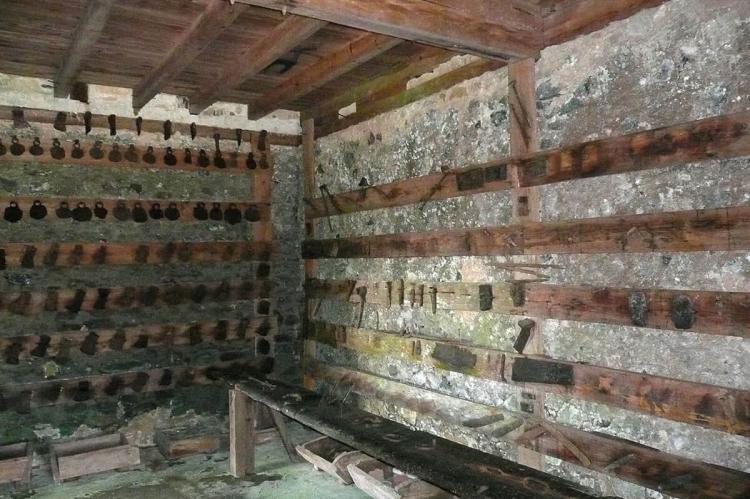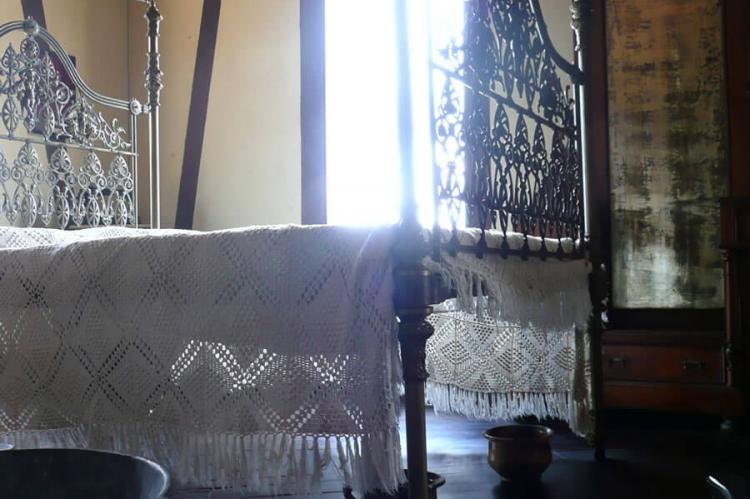Archaeological Landscape of the First Coffee Plantations in Southeast Cuba
The Archaeological Landscape of the First Coffee Plantations in Southeast Cuba is a UNESCO World Heritage Site. It offers insights into Cuba's role in the 19th-century global coffee trade, showcasing the remnants of a thriving industry and its social, economic, and cultural dynamics.
Coffee and Colonization: The Legacy of Southeast Cuba's First Plantations
The Archaeological Landscape of the First Coffee Plantations in Southeast Cuba, a UNESCO World Heritage Site since 2000, offers a fascinating glimpse into the island's role in the global coffee trade during the 19th century. Situated in the lush foothills of the Sierra Maestra, this landscape preserves the remnants of a once-thriving coffee industry, showcasing the social, economic, and cultural dynamics that defined the era. The ruins of plantations such as La Isabelica and Santa Catalina are tangible links to a past where coffee production was not only an economic engine but also a reflection of the complexities of Cuban society at the time.
Historical and Economic Significance
At the height of their prosperity, the coffee plantations in southeastern Cuba were bustling hubs of commerce. Introduced by French refugees fleeing the Haitian Revolution, these plantations revolutionized Cuba's coffee industry. Innovations such as sun-drying and large-scale production helped elevate Cuba to a prominent position in the global coffee trade, with exports reaching markets in Europe and beyond. The fertile soil of the Sierra Maestra, combined with an elaborate system of terraces, irrigation channels, and stone walls, enabled efficient coffee cultivation in this challenging terrain.
However, the prosperity of these plantations was built on the exploitation of enslaved Africans, whose labor was integral to the industry's success. The remnants of slave quarters, processing facilities, drying terraces, and opulent owner's houses provide a stark reminder of the hierarchical social structures that underpinned the plantations' economic success. These architectural ruins are markers of an industrial past and symbols of the human cost accompanying Cuba's coffee boom.
Architectural and Cultural Heritage
The Archaeological Landscape of the First Coffee Plantations is notable for reflecting both European influences and local ingenuity. The plantations were meticulously carved into the mountainous terrain, creating a landscape of terraces and irrigation channels that harmonized with the natural environment. This careful integration of human enterprise with the land demonstrates a deep understanding of the region's geography while also reflecting the architectural traditions brought by French planters.
Key sites such as La Isabelica offer a window into the life of plantation owners and workers. The remnants of processing facilities and drying terraces speak to the industrial processes central to coffee production. At the same time, the remains of slave quarters highlight the social inequalities that were a fundamental part of plantation life. The juxtaposition of these structures within the landscape underscores the complex interplay between wealth, power, and labor in the coffee plantations.
Influence of French Refugees and Global Impact
The coffee boom in southeastern Cuba was significantly influenced by French refugees who fled to Cuba after the Haitian Revolution. These immigrants brought with them valuable knowledge of coffee cultivation and new techniques for processing and drying coffee beans. Their innovations had a lasting impact on the global coffee industry, particularly in the methods of sun-drying beans, which became a standard practice in coffee production worldwide.
The plantations shaped the local economy and contributed to Cuba's role in the international coffee trade. The global reach of Cuban coffee during the 19th century is a testament to the plantation owners' ability to adapt and innovate, even in the face of challenging environmental conditions. This period of prosperity, however, was built on a foundation of exploitation, with the reliance on slave labor leaving a dark legacy that continues to resonate.
The Legacy of Slavery
While the Archaeological Landscape of the First Coffee Plantations highlights the ingenuity and innovation of the time, it also reminds us of the suffering endured by those who worked the land. Enslaved Africans played an essential role in the cultivation and processing of coffee, and their labor drove the economic success of the plantations. The conditions they endured, along with the brutal realities of slavery, are embedded in the very soil that once nurtured the coffee plants.
As visitors explore the ruins of these plantations, it is important to acknowledge the human cost of this economic prosperity. The architectural remains, particularly the slave quarters, offer a stark reminder of the exploitation that underpinned Cuba's coffee boom. This darker aspect of the landscape serves as a counterpoint to the innovations and economic achievements of the time, underscoring the complexities of Cuba's history.
Preservation and Modern Significance
Today, the Archaeological Landscape of the First Coffee Plantations is a poignant reminder of Cuba's multifaceted past. The landscape, with its crumbling haciendas, terraces, and irrigation channels, is a testament to the ambition and ingenuity of the people who once lived and worked there. It also serves as a memorial to the enslaved Africans whose labor made this economic success possible.
Recognized as a UNESCO World Heritage Site, the landscape continues to preserve its historical and cultural significance, offering visitors a window into a world where commerce, innovation, and exploitation coexisted. The ruins tell a story of human enterprise and resilience, but they also remind us of the profound inequalities that shaped the social and economic fabric of 19th-century Cuba. This complex legacy continues to shape the cultural heritage of the region today.
Conclusion
The Archaeological Landscape of the First Coffee Plantations in Southeast Cuba is a powerful testament to the island's role in the global coffee trade and its complex social history. The remnants of the plantations reveal the ingenuity and innovation that characterized Cuba's coffee boom while also reflecting the harsh realities of slavery that underpinned this economic success. As a UNESCO World Heritage Site, this landscape preserves an important chapter in Cuba's history, offering a nuanced view of a past where human ambition and suffering were inextricably linked. It serves as a lasting reminder of the impact of coffee production on both the natural landscape and the people who shaped it.
